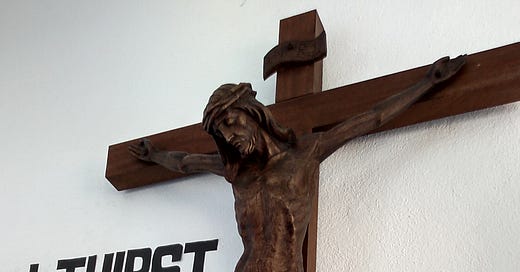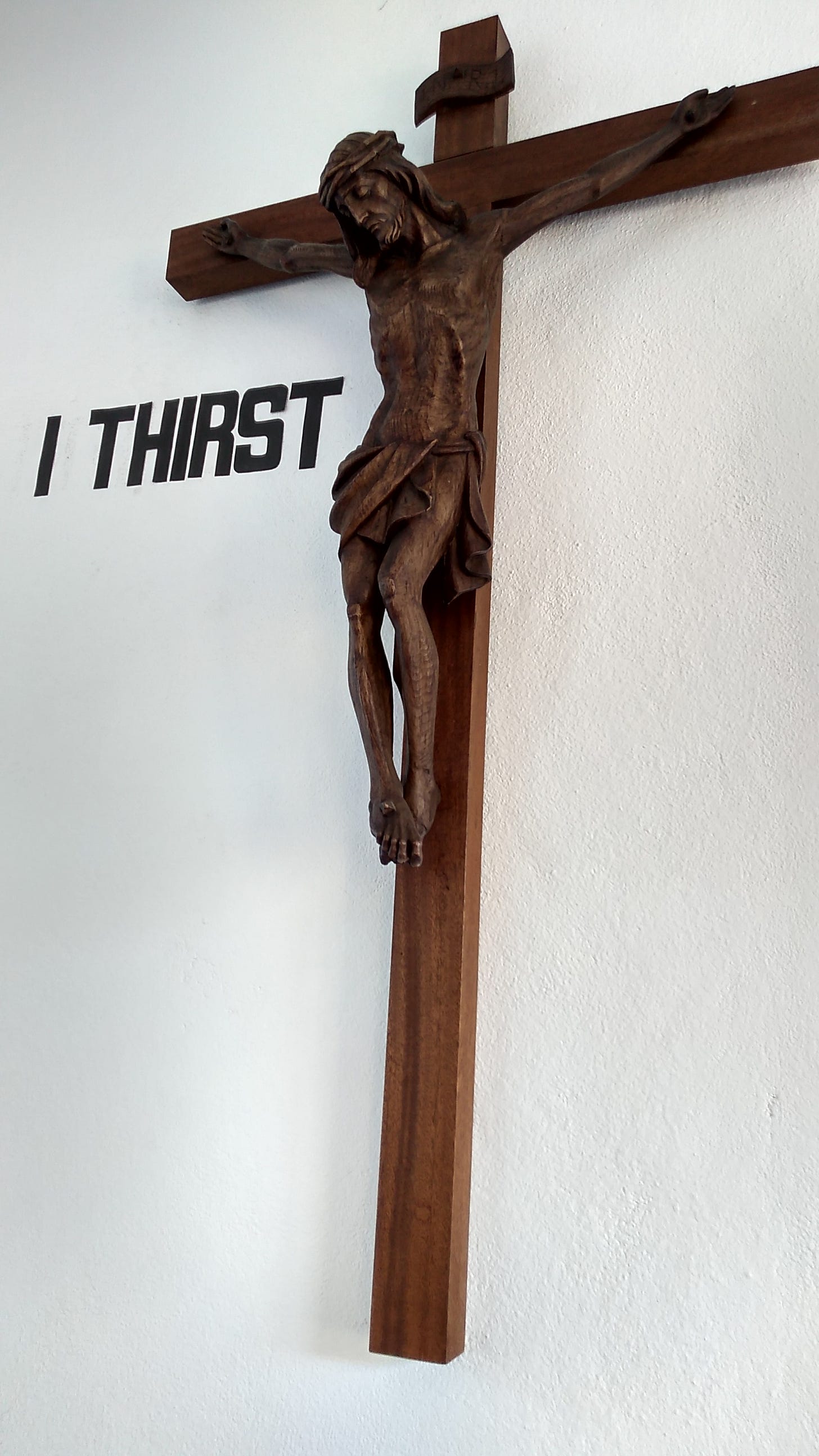(Picture source: Cathopic, Ruben Gonzales.)
John 19:28-30
28 After this, Jesus, knowing that all was now finished, said (to fulfil the scripture), “I thirst.”
29 A bowl full of vinegar stood there; so they put a sponge full of the vinegar on hyssop and held it to his mouth.
30 When Jesus had received the vinegar, he said, “It is finished;” and he bowed his head and gave up his spirit.1
Context: Crucifixion was introduced to the Holy Land by Greeks and Romans, though it originated likely in Phoenicia as a means of culling rebellion among slaves. Thus, it is ironic that the Son of God who came to set us free was crucified. Note also that the Romans were amenable to Jewish requests related to Sabbath prohibitions on work and arranging for burial.
Translation: The scripture that Jesus fulfilled in saying, “I thirst” was Psalm 69:21, “They gave me poison for food and for my thirst they gave me vinegar to drink.” This section of the book of John also references several other Old Testament scriptures: Deut. 21:23 and Ex. 12:16.
Vocabulary:
thirst: Greek: dipsao – the state of being thirsty. Although the Greek reflects the physical thirst, the spiritual longing for the redemption of the world is seen in this passage by Mother Teresa.
vinegar: Greek oxos, meaning sour wine. In other gospels, it is mingled with gall. It was a common element to the crucifixions that the condemned prisoner would be given such as a kind of sedative.
hyssop: an aromatic herb used in Hebrew purification rites, which also has medicinal uses. Scholars have argued about whether its 40-50 cm length stem was long enough to truly have reached to Jesus’ lips on the cross. Perhaps a reed was also used?
Meditation
(from Come Be My Light, pp. 260-261)
“My heart hath expected reproach and misery. And I looked for one for would grieve together with me, and there was none: and sought one that would console me, and I found none,” reads the Offertory verse (Psalm 68:21) used for the Mass of the Feast of the Sacred Heart and Votive Masses of the Sacred Heart outside Easter Time. This verse triggered in Mother Teresa’s memory her crucial encounter with Jesus on the train and was a permanent challenge for her to “be the one.”
Years later, on a holy card of Ecce Homo with the printed words, “I looked for one that would comfort me and I found none,” she would write, “Be the one.” She loved to look at this image, a reminder of her call, and to give copies to her followers as an incentive to carry it on. She used to exhort her sisters:
Tell Jesus, “I will be the one.” I will comfort, encourage and love Him….Be with Jesus. He prayed and prayed, and then we sent to look for consolation, but there was none….I always write that sentence, “I looked for one to comfort Me, but I found no one.” Then I write, “Be the one.” So now you be that one. Try to be the one to share with Him, to comfort Him, to console Him. So, let us ask Our Lady to help us understand.
One of the sisters remembered Mother Teresa’s explanation:
“Be the one…be the one who will satiate the Thirst. Instead of saying, “I Thirst,” say, “be the one”…do whatever you believe God is asking you to do to be the one to satiate Him.
Discussion Questions:
How might you “be the one” in your current circumstances?
Are there persons in need who come to mind when you read this passage and think on the gifts Jesus wants to bring to the world?
The idea of comforting Jesus on the cross is very evocative. What experiences of comfort have you had in your life? How would they compare with the comfort you would want to give to Jesus?
The Catholic Edition of the Revised Standard Version of the Bible, copyright 1966 by the Division of Christian Education of the National Council of the Churches of Christ in the United States of America. Used by permission. All rights reserved.





